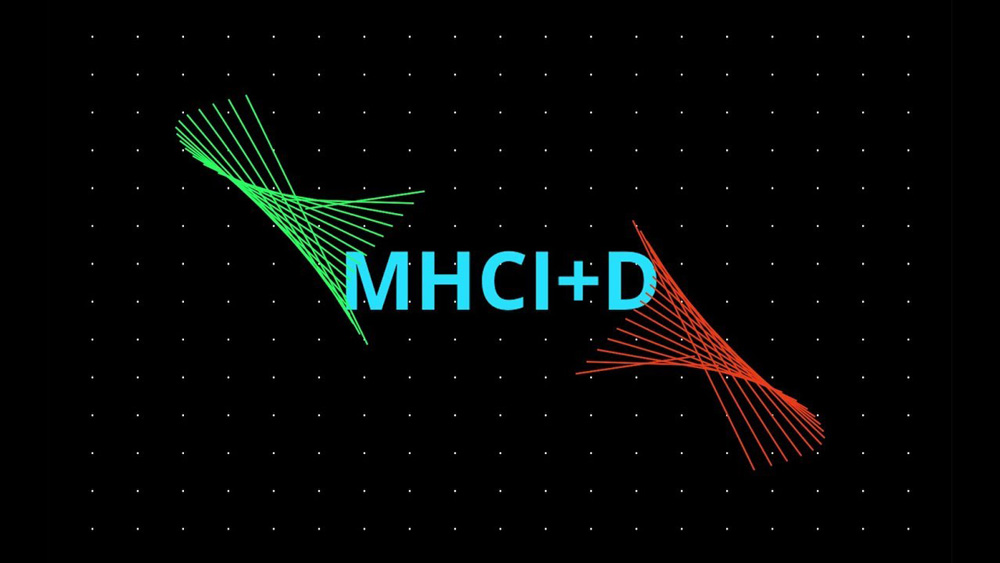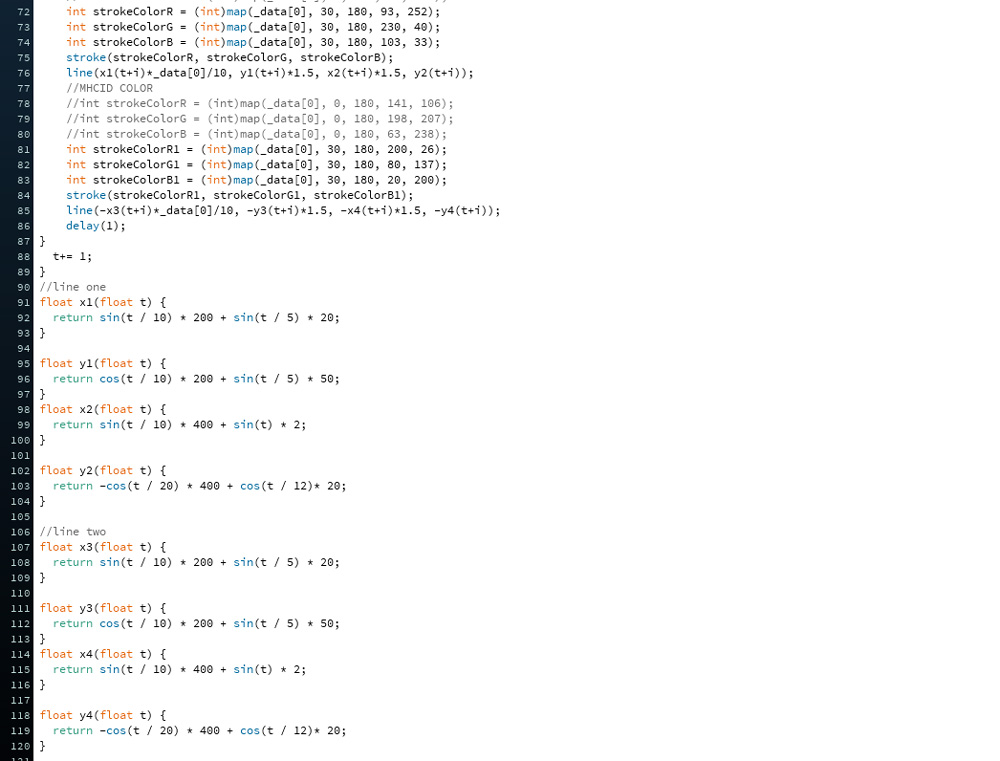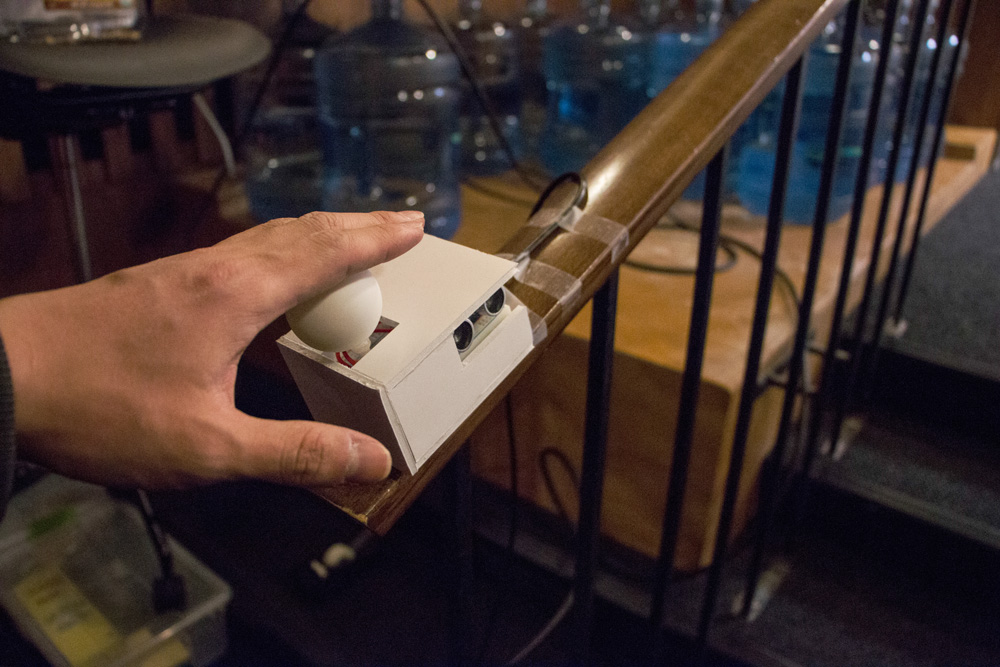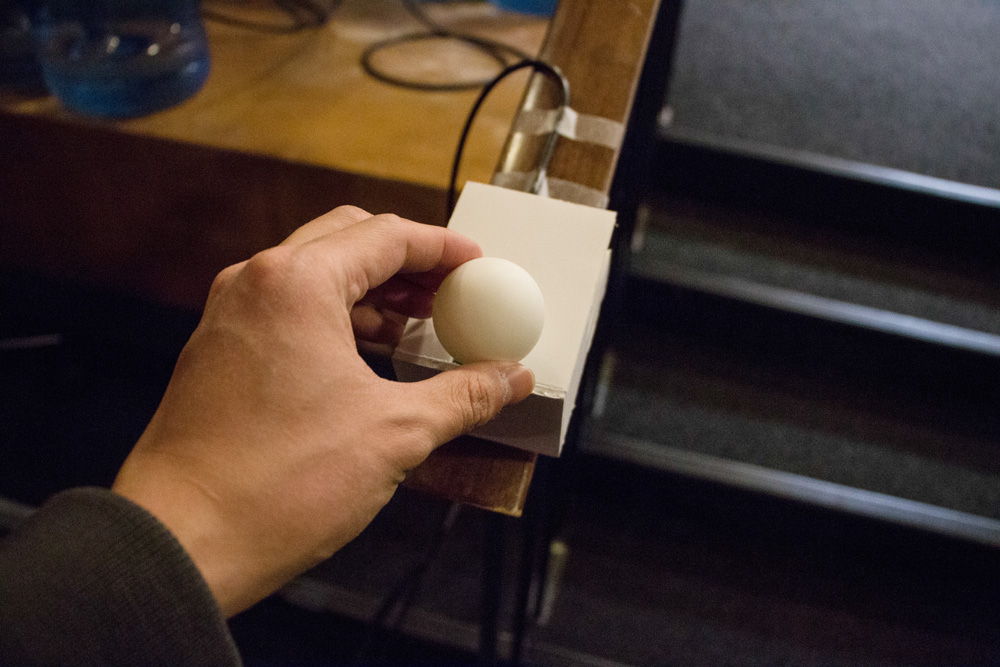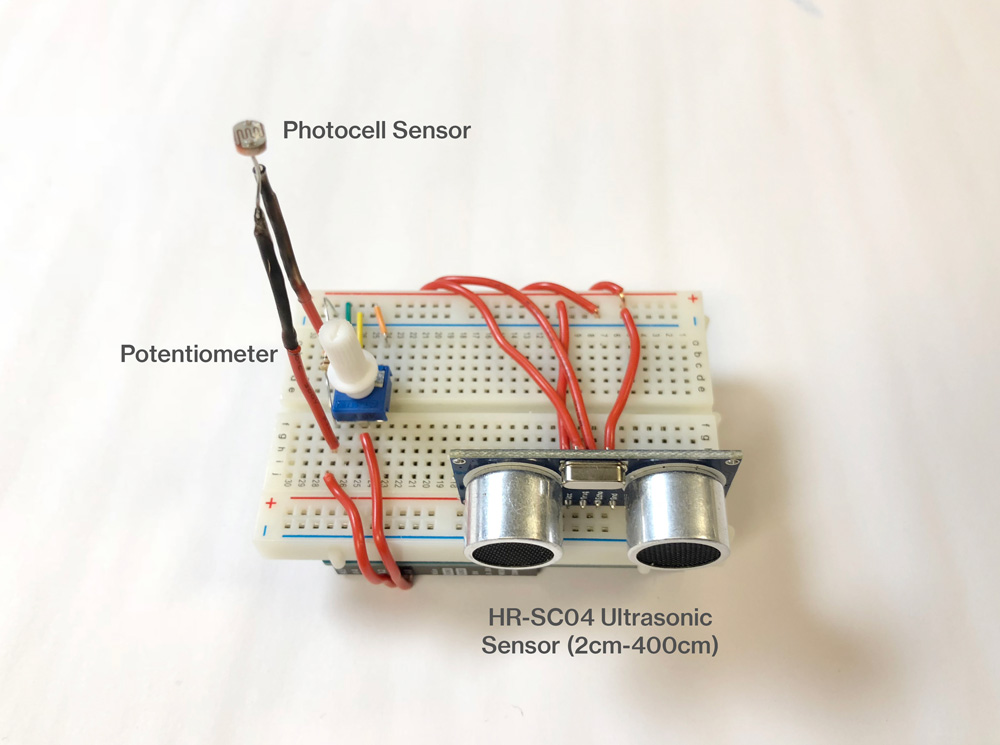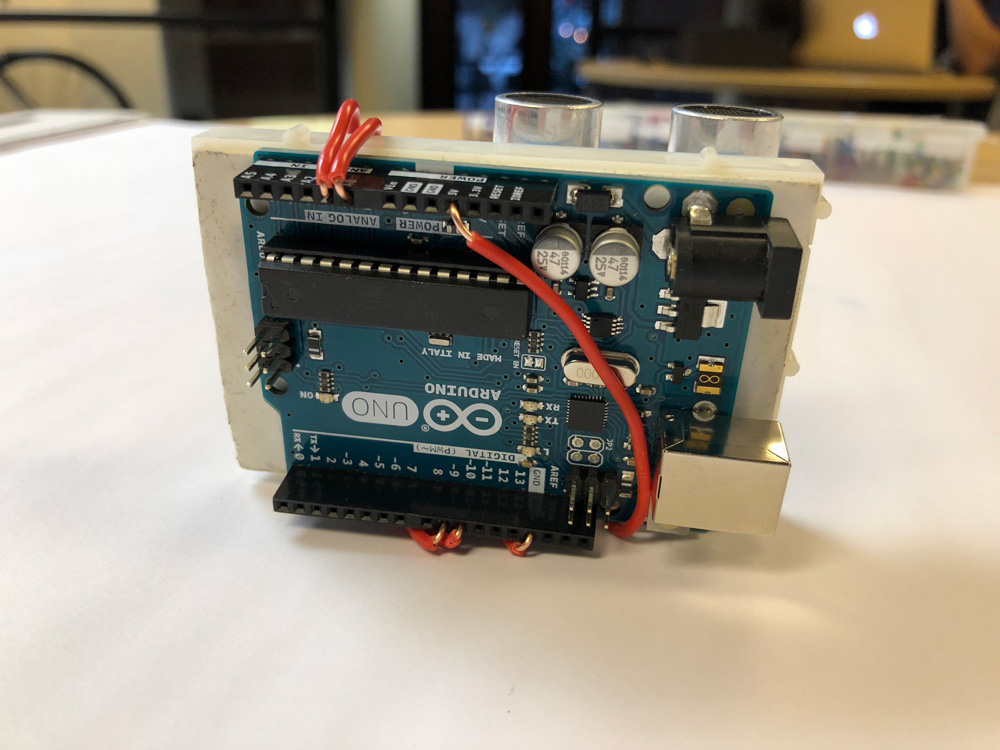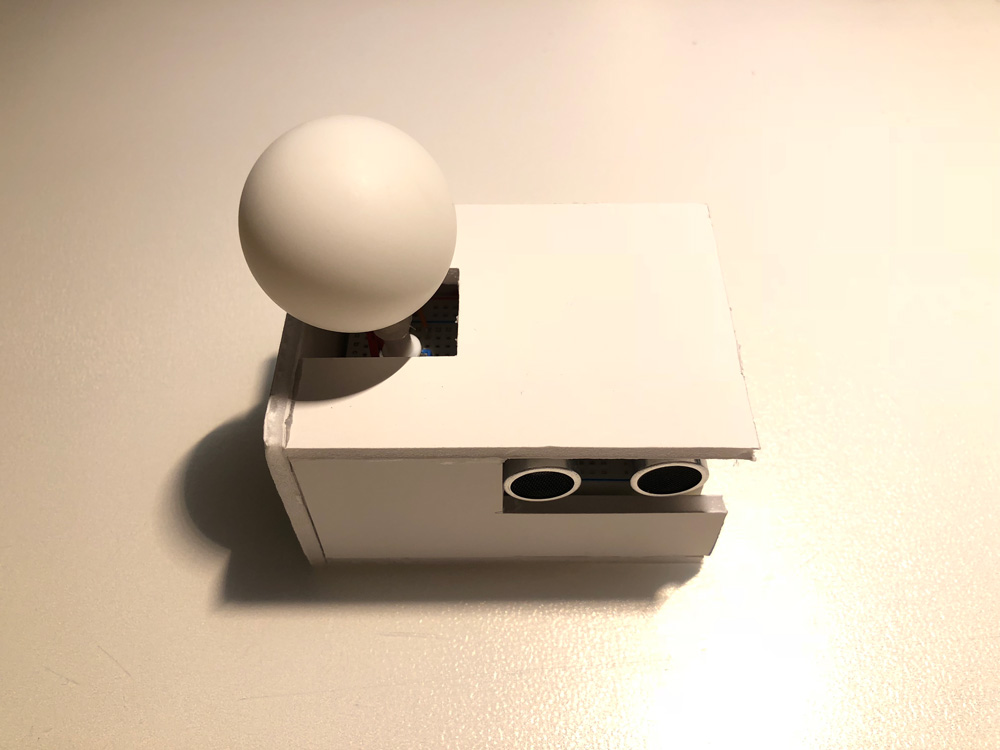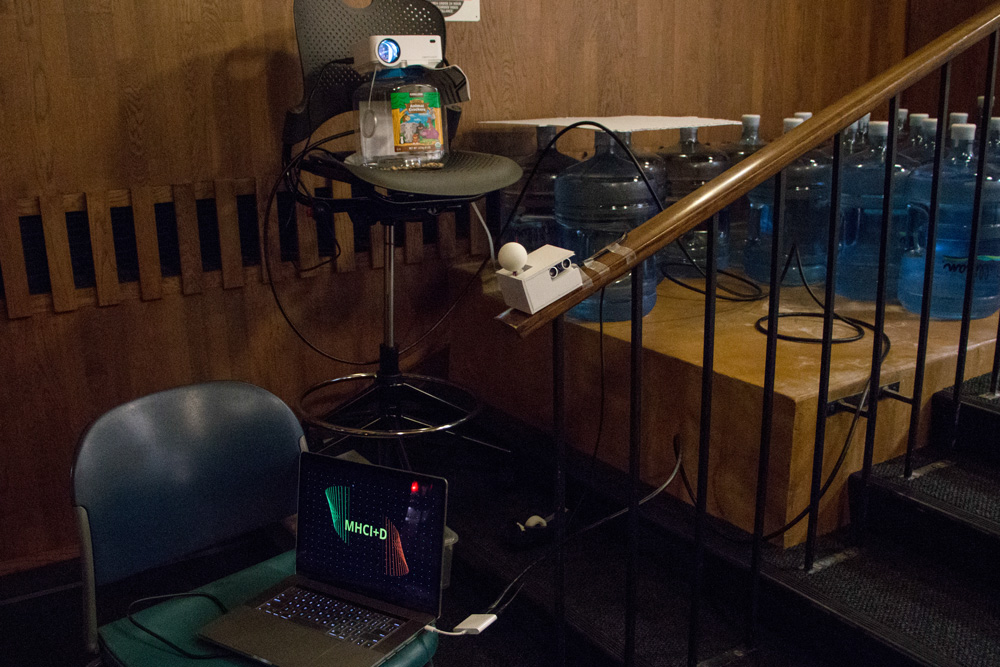The projection consists of lines, words of “MHCI+D”/“Welcome!” and dot matrix. Considering the wall for projection is made with lines of panels, I chose lines for projecting instead of other geometries. By this way, lines could be fitted into the environment with harmony, while still maintain their variations. There are 34 lines to represent 30 of current students and 4 of program faculty. The dot matrix functions as a contrasting background to pop out the content.
